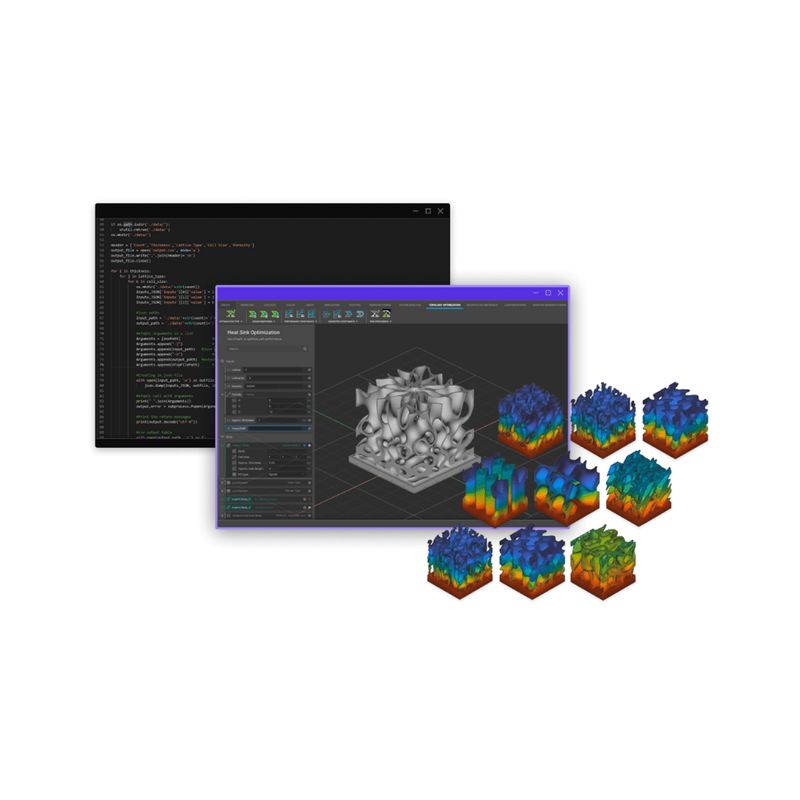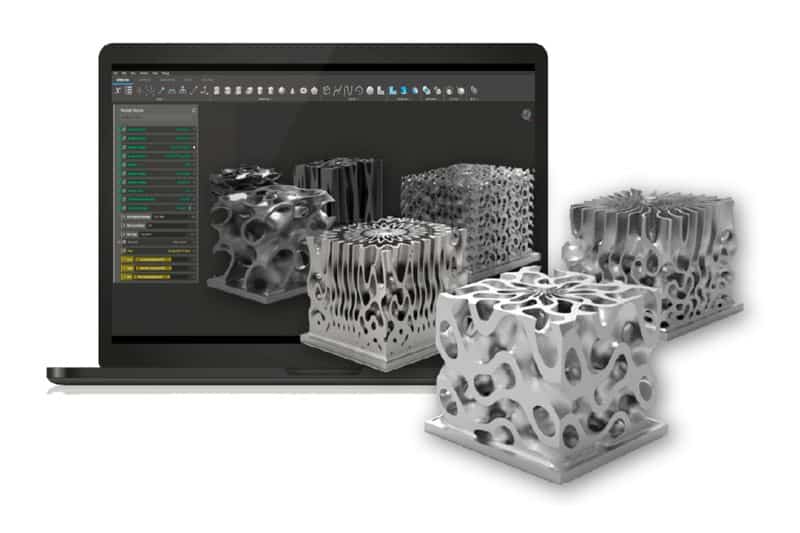
If you’re working in any design related industry, you must have already come across the term Generative design.
In most cases, Generative design is often considered the ‘future of design’ and the designers have many reasons to take complete advantage of its capabilities.
The global generative design market touched a value of USD 192.8 million in 2021 and the market is expected to reach USD 526 million by 2027.
An increasing number of design-oriented industries, such as architecture and construction, are implementing generative design processes for better outcomes.
If you are new to the concept of Generative design, it is an iterative design exploration process. It involves creating 3D models optimized by computer software.
An engineer or designer will provide certain parameters and constraints required for the model, and the software will come up with all the possible designs. The engineer can then select the design that makes the most sense or refine the attainable designs by selecting certain output or changing input values.
Generative design is a fairly new AI-based design technology. It is an example of what digital transformation means to product development.
In this article, we will discuss seven important reasons why you should consider generative design for your business.
7 Reasons why you should care about Generative design
Before we move on to understand why we should care about Generative design, let’s first understand how it works and what are its most common applications.
Unlike traditional CAD tools, Generative design software inputs are design parameters and constraints.
As a result, Generative design software offers multiple design solutions based on those inputs. For instance, engineers or designers need to provide the following parameters, constraints and design goals:
- Product weight and size constraints
- Requirements for design interface
- Load and operating conditions
- Cost constraints
- Information of material
- Manufacturing approach, etc.
The software will then explore all possible solutions and generate CAD data for the required product based on the inputs.
With true machine learning capabilities, Generative design software also performs multiple iterations and learns from previous iterations to create better design options. Thus, designers and engineers can select the solution that makes the most sense.
What makes this process different from the traditional design process is that the simulation and design processes run simultaneously.
Generative design compliments the development process with AI and machine learning, which are considered two of the most impactful technologies of the 21st century.
But what makes Generative design an appealing proposition?
Let’s find out!
Offer multiple possible solutions
With the help of AI, Generative design systems can explore an extensive pool of feasible solutions, and compare the results of multiple simulations to determine the design that meets all the requirements.
The sheer volume of results Generative design software can offer is truly impressive. Evidently, it outmatches any one engineer or a team of engineers. By putting in your required parameters and constraints, Generative design software can offer thousands if not millions of design options in no time.
Indeed, quantity does not equal quality. However, it’s never harmful to have a wide array of options that match your parameters.
Once you input your requirements to the Generative design tool, all that is left for you to do is skim through the options and shortlist the designs that make sense. You can also fine-tune your design further to get the most efficient and cost-effective design.
Make changes hassle-free
With Generative design, it is easy to fine-tune your design to get to the desired result. Design tools like CAD software offer different features in terms of tweaking or modifying designs.
For instance, parametric modeling uses 3D CAD software to input design parameters and constraints. It can even make auto-updates after you make changes to a design.
The only downside to conventional tools like parametric modeling is that the design processes as well as applying updates take a lot of time, particularly when making unforeseen or major changes.
This is where Generative design software wins against conventional design software. Fine-tuning the designs is purely automatic and is processed and updated quickly.
Reduce turnaround time and roll out products faster

With conventional CAD tools, the design process is often time-consuming and the design prototype or the final product cannot be completed as quickly as the clients expect. This pressure often stresses out those working on the design.
However, with generative design software, you can automate the CAD design process resulting in solving complex design problems faster.
With generative design software, you can generate numerous creative design options, a task that is humanly impossible with traditional software. As a result, you can reduce lead times and launch products faster in the market.
If you are interested to learn more about how you can use the nTopology platform to generate high-performing products, then refer to the Generative design 101 guide.
Cut down on costs and increase efficiency
Across industries ranging from product design to engineering to automotive, generative design has effectively reduced part weight up to 50%, part cost up to 20%, and development time up to 50%.
As mentioned in the last point, generative design software enables engineers to work quicker than would otherwise be possible.
Generative design software can produce multiple design options with fewer designers on board. For certain engineering problems, generative design systems already outclass human engineering teams. Moreover, design testing can become an expensive affair if you are working with traditional design tools.
Generative design software has built-in simulators that help identify and eliminate weak design areas and ensure designs adhere to safety norms and are execution-ready. They don’t need the same level of testing that traditional options go through.
This also means you can reduce costs on human resources and testing and reallocate a significant portion of your budget to more important aspects of product development.
Additionally, Generative Design tools can reduce manufacturing and maintenance costs by consolidating multiple parts into one.
Make better products
The ultimate goal of a product is customer satisfaction.
As a business, it is important to come up with the best product for your customers. Engineers and designers can make better products with the help of generative design software in the following manner:
The software can recognize, fix, and improve poor or problematic areas in designs and ensure that only practical design solutions are offered.
Generative design systems can produce non-intuitive solutions that may never have been found through the traditional approach. Thus, it has the capability to present unique design solutions.
Machine learning enables generative design software to optimize and re-optimize itself with each iteration.
Provide opportunities for all types of businesses
Another interesting benefit of generative design is that it presents amazing possibilities for growth and improvement across all business types including local and smaller-scale designers.
As the design industry tends to favor mass production and larger-scale designs, small designers without access to production resources are simply out of luck. It becomes difficult for these designers to make profitable designs.
However, with generative design software, you can do a batch run of just one—individual designers can now produce single or small numbers of mock-ups and finished products at a reasonable price point.
Hence, generative design can potentially present a level playing field for all designers and engineers, big and small. This could revolutionize the global design market and bring greater variety in products.
Join in on the future of design
When you combine generative design with new forms like 3D printing and cloud computing, you suddenly have access to thousands of solutions to one engineering or design problem.
Generative design will most likely continue to evolve into something that may look entirely different in the years to come, but one thing is certain—generative design is going to stay for good.
Generative design’s AI-accelerated digital simulation and analysis can be assessed in the blink of an eye. Without a doubt, generative design is the future of making things. It’s an entirely new way of doing things.
Some of the industries in which generative design is already being used are:
- Automotive
- Product design
- Manufacturing
- Engineering
- Visual and graphic arts
- Aerospace
- Industrial machinery
As technology advances, we will continue to use the power of artificial intelligence and machine learning to help solve complex design problems in different domains. It is safe to say that with generative design, the future is here.
Conclusion
In conclusion, the advantage of generative design becomes evident when you consider what it takes to get started with any design. You tackle a design or engineering problem with a general understanding of what you expect out of your design.
With this revolutionary technology, instead of creating a design based on the idea that you have in mind, you can start by offloading that data into a computer and allowing it to kickstart the design process.
This is in stark contrast to conventional tools that we have seen so far, like topology optimization, latticing, or similar CAD tools. All of these previous tools improve on existing designs while generative design systems create new and unique designs.
If you work in a design-oriented industry, now is a good time to familiarize yourself with generative design.
Generative design is here to stay and we look forward to seeing how it evolves from here in the coming years.
Featured image credits: ntopology.com



